Tattoo equipment: what are the essentials to get started?
Tattooing has existed for thousands of years. Although the symbolism and interest in tattooing differs from one society to another, the process has remained the same to this day. It involves applying ink under the skin, between the dermis and the epidermis, so that the design created is indelible. Inserting a product under the skin is not natural, so humans had to find tattooing tools. Originally, tattooing was done by hand, sliding pigments under the skin with small pieces of sharpened bone.
The tattoo machine was created in the 20th century, and tattoo equipment has continued to evolve ever since.
Today there are thousands of products in the tattoo world. The challenge is to choose the right tattoo equipment for you. The right equipment will give you and your clients maximum comfort. Therefore, it is important to know what tools are useful for tattooing before you choose.
We will introduce you to the must-have professional tattoo equipment. Whatever your level, you will need a machine, needles, transfer sheets, tattoo inks, a power supply, and hygiene equipment. If you are not familiar with one or more of these products, we will explain them to you.
Different professional tattoo machines
The tattoo machine, also known as a dermograph, is the tattoo artist's main tool and controls the movement of needles to place ink under the skin. There are two families of machines: coil machines and rotary machines.
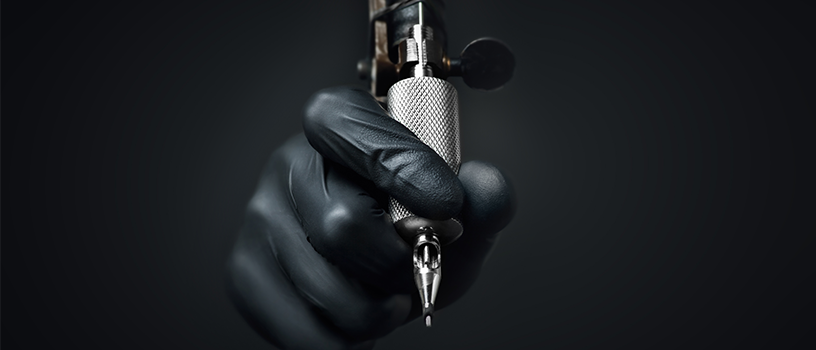
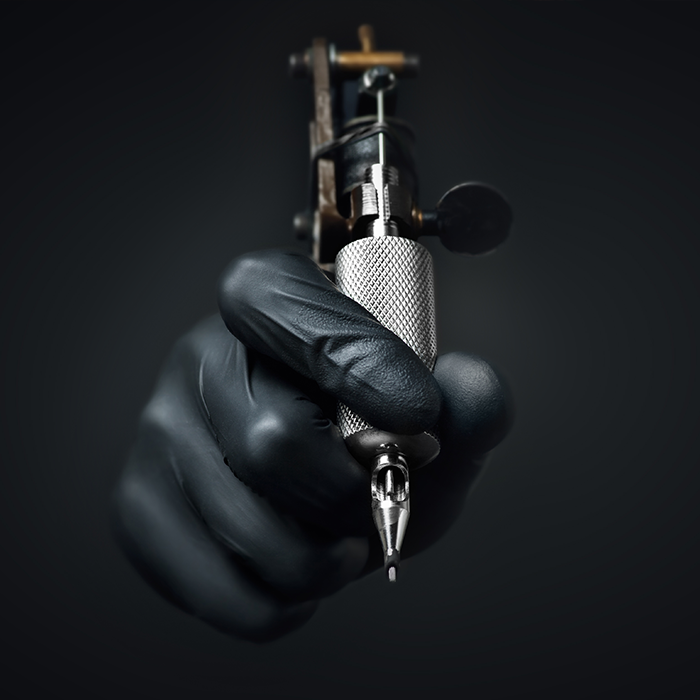
Coil machines
The coil machine has many different names: it is also known as a traditional machine or a coil machine. It takes its name from the two copper coils mounted on its frame. Its operation is based on a system of electromagnets that allows upward movement of the inertia block, the part on which the needle beam sits. There are 8-turn, 10-turn, 12-turn and even 14-turn coils. This number corresponds to the number of turns made by the copper wire around the coil core. For example, in an 8-turn coil, there will be 8 layers of copper. It is very important that the two coils are identical on the machine. The higher the number of turns of the coil, the greater the power of the electromagnet, which will give the machine more force (more torque).
There are two types of coil machines: the plotter and the shader.
Plotters are ideal for drawing lines and making outlines. They have a very high speed, which allows them to stitch a continuity of stitches very close together, forming a line. Plotters do not require large bobbins, maximum 10 turns, because they are used with a small number of needles. In this type of machine, speed takes precedence over power and stroke.
The filler, on the other hand, is slower, but it has greater impact power and stroke, allowing it to cast a large number of needles. In general, this type of machine has large coils for maximum power and torque. It is used for shading and filling. It is therefore necessary to have at least one. These machines are adjustable and removable. All parts can be easily changed to suit your needs.

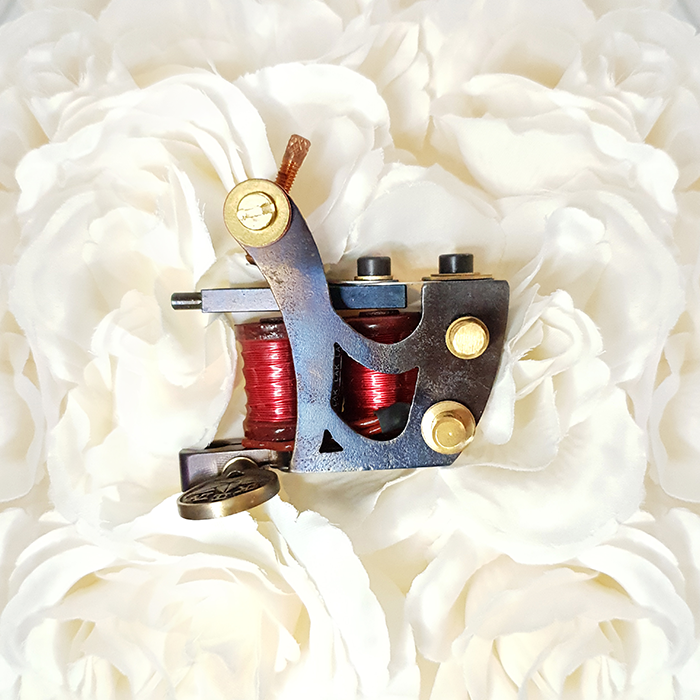
Rotary tattoo gun machine
The next type of tattoo gun is the rotary gun, which uses an electric motor. They are much quieter than the coil machines, which emit a loud humming sound. This is because the internal mechanics of the rotary machine are simpler, while the coil makes a constant sound due to the movement of the flying weight hitting the coil.
The motion of the motor of a rotary press is transmitted to the needles by means of a rotating shaft. Some rotary presses have an adjustable stroke to optimize them for tracing or shading. This involves adjusting the amplitude of needle movement. Unlike coil machines, with a short stroke (e.g., 3.5), the machine will be similar to a filler or shader, while with a longer stroke (e.g., 4.2 or more), to a plotter. We can take Bishop Wand machines as an example, which are directly called "Liner" for the 5 mm stroke (longer) and "Shader" for the 3.5 mm stroke (shorter).
There are also pen machines, which are more ergonomic, but can be used only with needle cartridges. Today there are also cordless rotary pen machines, with a battery built directly into the pen, offering true freedom of movement.
The rotary pen seems easier to use, but care must be taken because, if used incorrectly, it can cause much more damage to the skin. In general, they are good shaders and fillers and are very versatile. The rotary is also appreciated for its light weight and low maintenance.
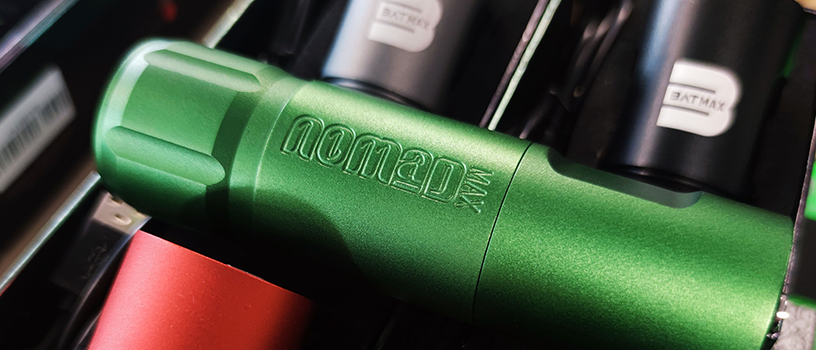
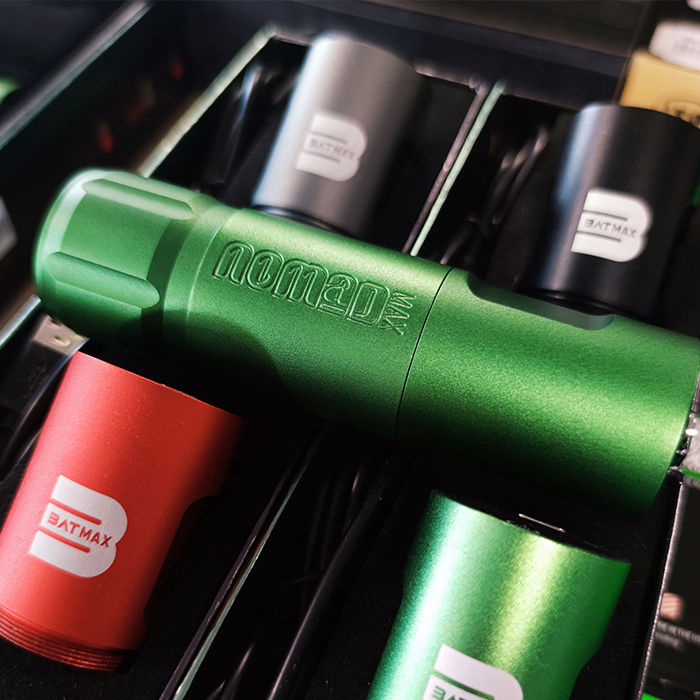
Tattoo needles, nozzles and cartridges
Tattoo needles place ink under the skin, between the dermis and the epidermis. The needles are welded onto a metal rod, also called a bar, or inserted into a plastic cartridge. There are different configurations with varying numbers of needles.
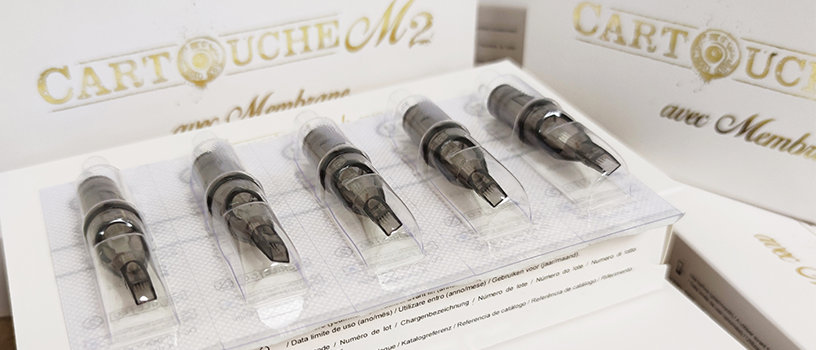
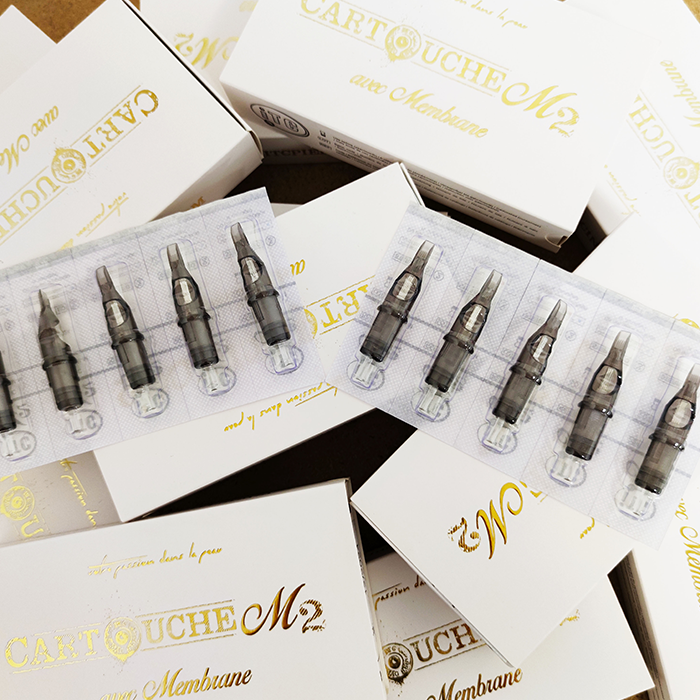
Liner
There are liners, also known as tracing machines. The cutter tips form a circle and the needles are very narrow. This type of configuration offers precision by concentrating ink in one spot to create saturation. They are used to create lines or dots, and the greater the number of needles, the thicker the line.
Shader
Shaders, also known as shaders, also have a circular tip, but the needles are more widely spaced. This type of needle spreads the ink under the skin without saturating the area. They are ideal for shading and shading.
Magnum
Magnums are groups of needles arranged in staggered rows. Rounded magnums use the same principle as traditional magnums, but the needle tips form a circular arc. Magnums are used to create solid areas of color or black, but also to create shadows or shading over large areas.
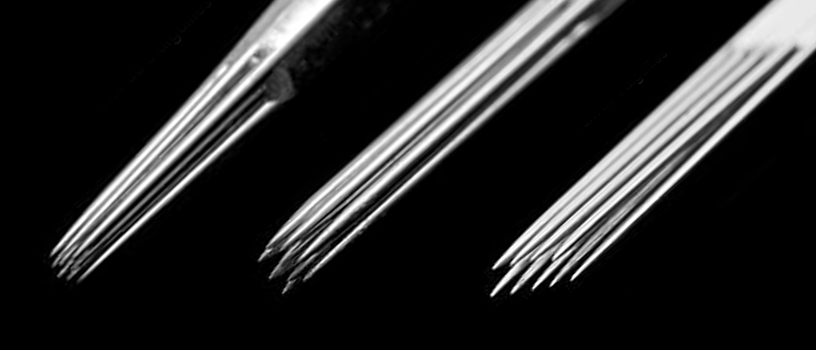

Traditional needles
Traditional tattoo needles are welded to a metal rod attached to the machine. The assembly is called a needle bundle. Bundles require empty, ready-to-use tubes in sterile, single-use blister packs, into which the bundle of needles must be inserted. For greater simplicity, it is possible to find "complete" bundles, that is, bundles of needles directly into tubes, ready for use.
Traditional needles require assembly on the machine, which can sometimes take a long time. You can use this type of configuration on all machines except pen machines.
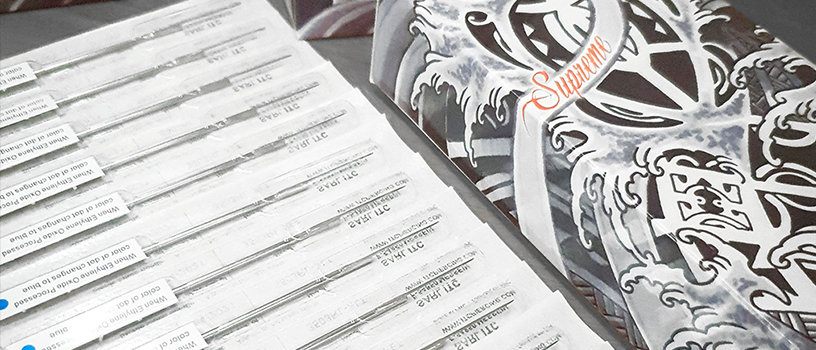
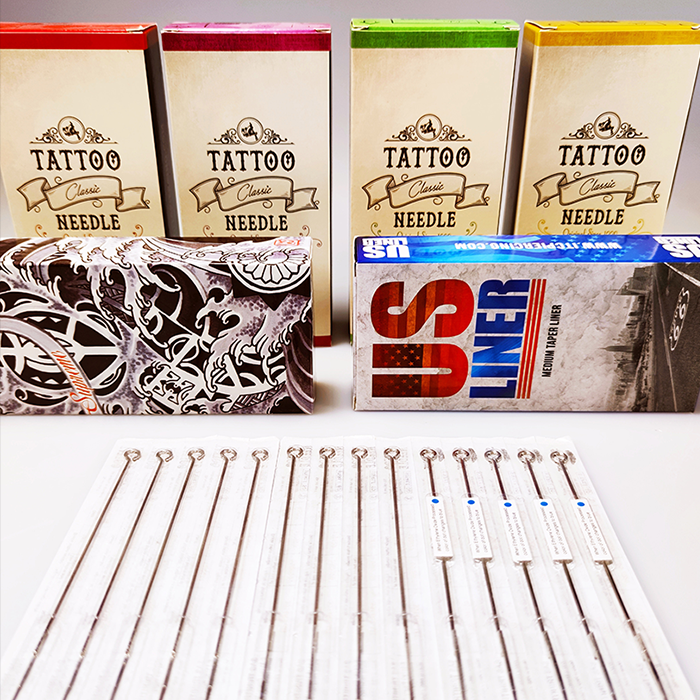
Cartridges
Tattoo needle cartridges are needles already inserted into a plastic part that serves as a nozzle and are packaged in a sterile blister pack. The cartridges are compatible with all rotary machines equipped with an adapter. The pen machines are designed directly for use with the cartridges, so no additional parts are needed. They are easily interchangeable to save time.
Note that cartridges are often incompatible with conventional coil machines, so ask us for advice before investing in cartridges and sleeves for these machines.
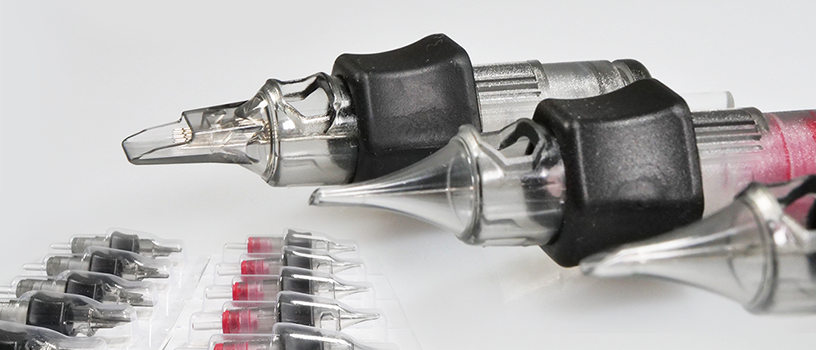
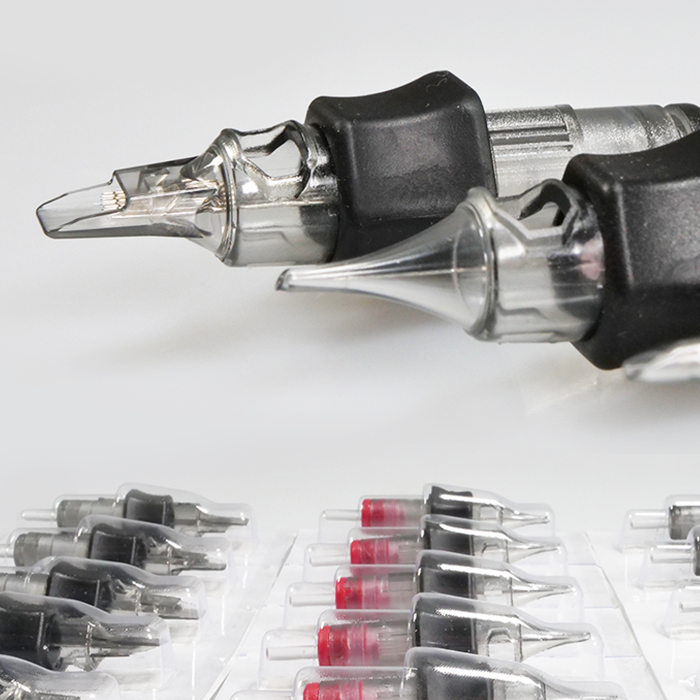
Thermocopier and tattoo stencils
A stencil is the most commonly used method of applying a design to the skin before tattooing. It consists of creating the design on a sheet of carbon paper and transferring it to the client's skin with a transfer fluid. The charcoal will mark the skin so that the design is reproduced on the area to be tattooed. The stencil is an important step in allowing the client to visualize the final result before starting. It also allows the lines and shading to be placed so that there is a solid base from which to begin the session.
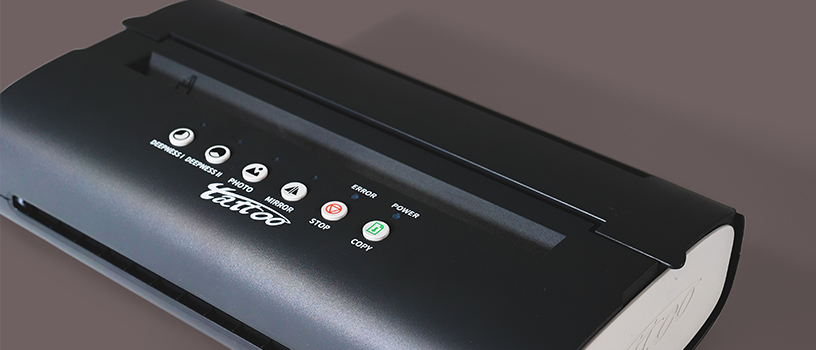

Tattoo stencil
A stencil is the most commonly used method of applying a design to the skin before tattooing. It consists of creating the design on a sheet of carbon paper and transferring it to the client's skin with a transfer fluid. The charcoal will mark the skin so that the design is reproduced on the area to be tattooed. The stencil is an important step to allow the client to visualize the final result before starting. It also allows you to place the lines and shading, so that you have a solid base from which to begin the session.
To make the stencil, you will need a hot copy deck, if you have a hot copy machine, or a manual transfer deck, if you do not. These decks generally contain one sheet of paper, which is then transferred to the stencil. These sets generally contain a sheet of carbon paper and a sheet of silk on which the carbon is deposited. Thermocopy binders are used to create a stencil using a thermal copier. In this case, you place the binder in a thermal copier. There are several models on the market, from traditional ones that copy the design onto the thermocopied stencil, to the latest generation models that are actual printers connected to your computer, tablet or smartphone. (Like the Brother Bluetooth, for example).
Thermocopiers
Thermal copiers usually accept A4 and long A4, although some can also accept A3. There are portable, battery-powered models that you can take with you when you are traveling. To make the transfer, once the pattern is on the silk sheet, you need to apply transfer gel to help the charcoal adhere to the skin, then place the stencil on the skin and all you need to do is confirm with the client before starting the tattoo. Preparing the break with the transfer fluid is an essential step for the charcoal to hold well throughout the session. Again, do not hesitate to ask us for advice, our professional team will be able to answer your questions.
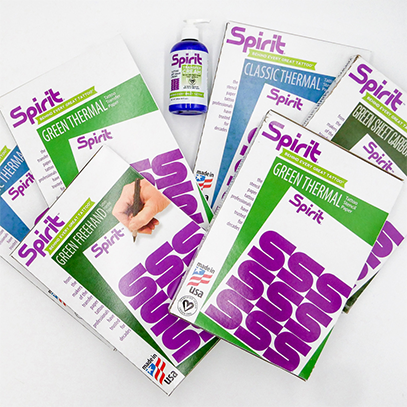
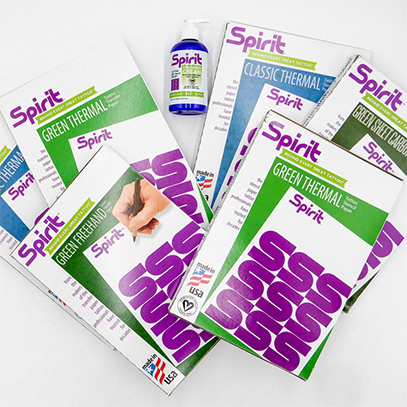
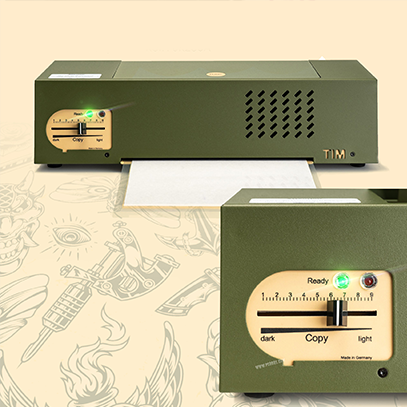
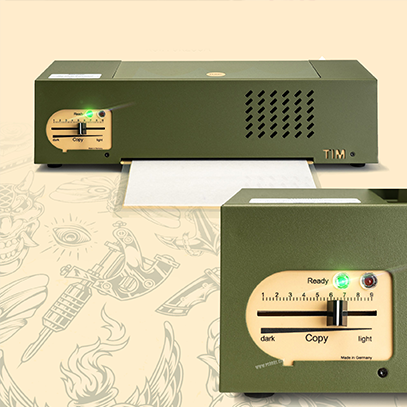
Tattoo Inks
REACH tattoo inks (also known as blends) are composed mainly of pigments and water. There are many different brands of tattoo ink on the market. From one brand to another, the consistency of the ink can vary: more or less fluid or thicker. The choice of ink is very personal and it is up to you to find the one that best suits your working method. A wide variety of colors are available, either singly or in sets of several colors, to provide a complete range.
Inks of the same brand can be mixed together to achieve a new shade.
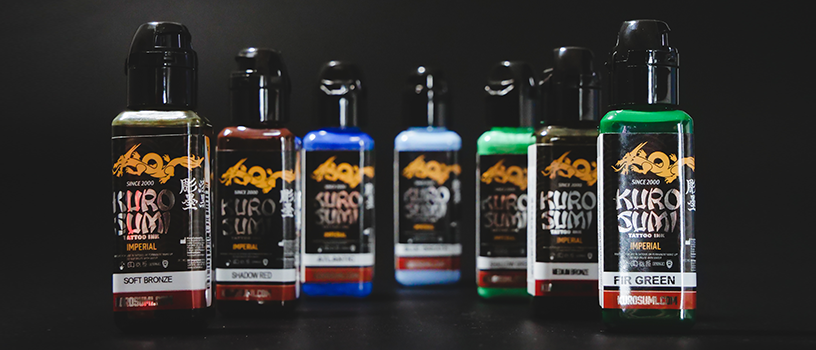
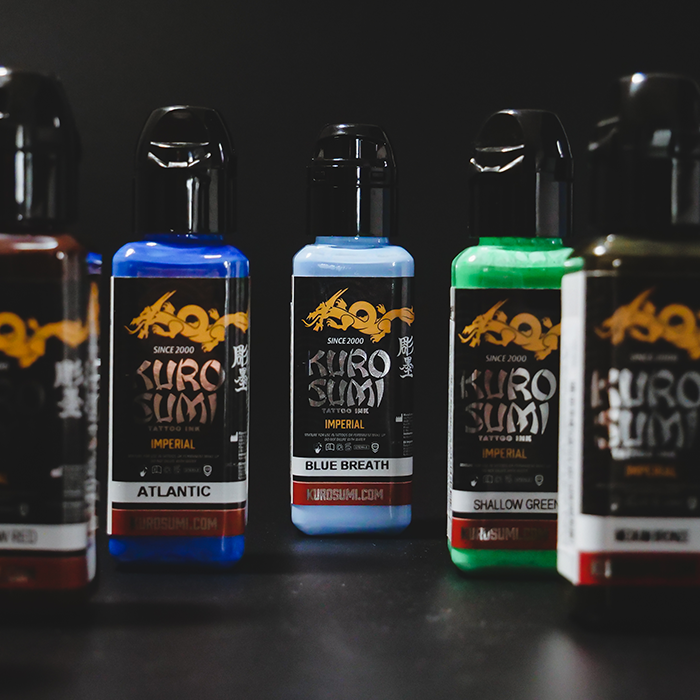
Black inks come in a wide variety of forms, and brands often offer a range of gray washes. Gray washes are diluted black inks, so the pigment is less concentrated and perfect shading and shading can be achieved. You can dilute the black inks yourself (using a thinner), but buying gray inks ensures that you will always have the same shade of gray when retouching, and that you know your range without any nasty surprises.
Dip the tip of the needle into a cap containing some ink, then prick the skin to place the ink between the dermis and the epidermis. It is important to use quality inks to ensure their durability.
It is essential to inquire about the inks you buy, as some inks are banned in France and Europe because of the pigments they contain.
Do not hesitate to check the ink certificates on our website, as all inks sold by ITC comply with current regulations.
Tattoo power supplies
The power supply transforms current and regulates it to get the right voltage for your machine and your work, so it is important to work with reliable, quality products. A good machine with a poor power supply will not be able to give you its full potential and working comfort.
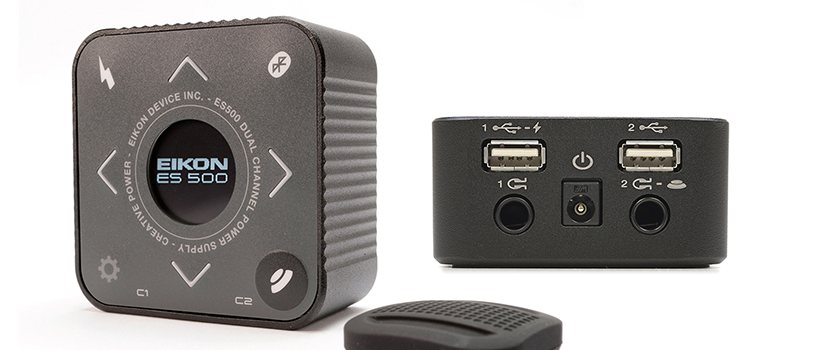
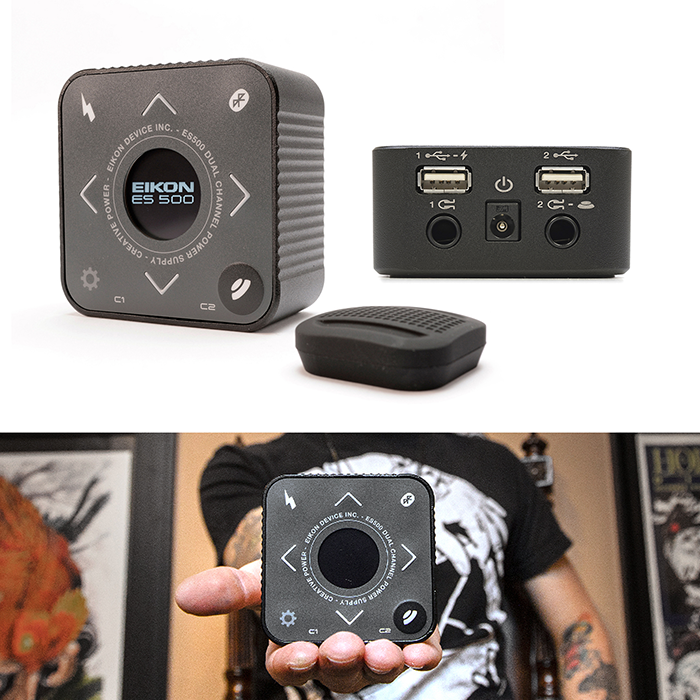
This is also true for the machine cable, also known as a clip cable (for coil machines), and for the foot pedal, if you use one. Most feeders work with a foot pedal; when you apply pressure to the pedal, it sends current to the machine, which starts, and then, when you release the pressure, the machine stops.
Some models operate continuously, so you only need to press the pedal ("on/off" model) to start and press it again to stop, so you don't have to keep your foot constantly on the pedal.
You can replace the pedal with a "No Foot" adapter: this is an adapter that you insert into the space provided for the pedal, on which there is an on/off switch.
The adapter will be connected to the machine, depending on how it is connected, either via a Clip-Cord or an RCA cable.
The tattoo power supply allows you to adjust the machine's voltage and thus change its tapping speed. On some models you can save the settings. If you wish, some power supplies have different outputs for the machine, so you can connect plotter and umbra gun at the same time.
Each power supply has specific characteristics: weight, size, digital or touch screen, detailed display, amperage, etc. It is up to you to make the choice according to your needs and the machine you have chosen.
It is important to know your needs and expectations before purchasing equipment. There is a large number of products available. Tattoo sessions can be lengthy, so quality equipment you can rely on is essential.
Tattooing is not a trivial act, and it is important to use quality products and equipment that comply with current legislation. However, this is not the most complicated stage. Hygiene regulations should never be neglected. Training in hygiene and health is comprehensive and above all mandatory.








